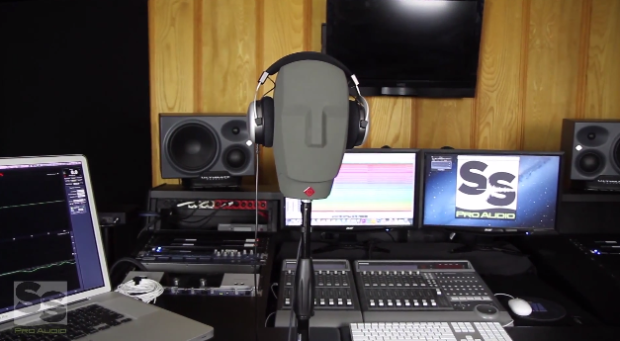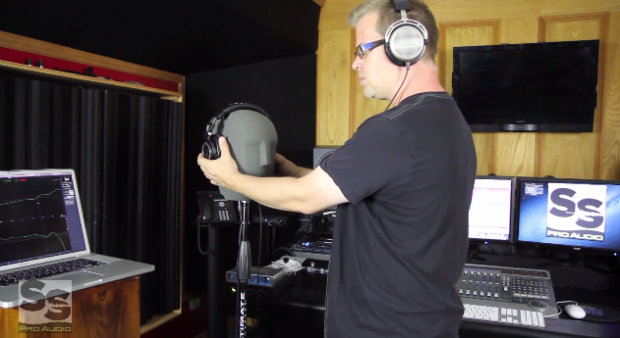Auditioning Headphones online? You’ve got to be kidding!?
Well, no, not really.
Thanks to great technological advances (increased bandwidth, faster transfer speeds, and of course great microphones, pre-amps, converters, and measurement equipment) along with cool online audio and video repositories (SoundCloud, YouTube), the audio industry and world at large have access to content and information like never before. The audio industry continues to surprise us with new innovations all the time, including a wireless form of listening, such as these enacfire earbuds, for a new convenience that adapts to the fast-moving technological advances in today’s world.
As an owner of Sonic Sense, a Colorado-based online pro audio retailer since 1994, I have always striven to bridge the gap between the value of a brick-and-mortar store and the convenience of online shopping. Perhaps the greatest missing element of the online shopping experience is the opportunity for a shopper to actually try the gear that most interests him or her. Having found that people like our delivery of comparison content whether through tapes (remember them?) in the mail or through online download, we embarked on a project starting last year and just unveiled it a few months ago.
After great internal consideration, critique of the concept, many tests and lots of communication with involved manufacturers, we have developed a process that is providing a one-of-a-kind experience for people online seeking more insight beyond mere reviews and the ever present “marketing inspired hyperbole” (Thank you, LSI). To that end we now provide the opportunity for people to audition microphones, studio monitors, loudspeakers, and headphones online without the bias of a manufacturer, the pressure of a salesperson, or the opinion of someone in a review somewhere online.

While nothing compares to actually evaluating equipment in your own listening space, we’re quite pleased with what can be conveyed online. So, whether you live far from an audio dealer, or just want to establish some relative baselines before getting first-hand experience, the differences portrayed in these samples are both evident and consistent with what we hear when listening in-person.
Here’s what we’re doing with respect to perhaps the strangest of all these demos – headphones. Whether it be branded headphones, monitoring headphones, or any other kind.
In order to provide diverse source material, we prepared a multi-genre audio montage that includes classical, jazz, hip-hop, electronic dance music, pop rock, alternative, and heavy metal. Some of the content is quite pristine while some is less dynamic and somewhat homemade. No matter what your application is, or your musical preference, you’ll be able to evaluate which cans best suit your needs with music relevant to your application. Having a good pair of headphones is one of the best music production guidelines available, and with everyone having such different set-ups at home, you’ll hopefully find this a useful opportunity to find the best headphones for whatever genre you create.
This 16-bit, 44.1kHz file is played from our DAW connected via USB to a Benchmark DAC-1 Digital-to-Analog Converter / Headphone Amplifier and out to each pair of headphones individually.
For tracking the audio montage, we use Neumann’s KU100 dummy head microphone (aka. “Fritz”), a Grace Design Lunatec V2 microphone pre-amp, and Benchmark ADC-1 analog-to-digital converter.

To assure consistency in both headphone placement and tracking levels, we take two steps:
1. We play a mono audio track to each pair of headphones that are placed on Fritz and sent through a Sound Devices USBPre2 going to Rational Acoustics’ Smaart 7 acoustic measurement software. When observing the transfer function (the difference between two sources, in this case the left and right channel of Fritz) we see a flat phase trace (+-15 degrees) in Smaart and nearly flat frequency response, typically +- .5dB depending on the consistency of the left and right ear cups.
2. We simultaneously monitor the microphone outputs on Fritz with BeyerDynamic T1 headphones (one of the most neutral headphones we have auditioned) using the HP output of the USBPre2 to ensure that the sound represents what we hear with the cans when they are actually on our own heads.
After getting the physical alignment correct, the microphone outputs are moved over to a Grace Design Lunatec V-2 microphone preamp and passed into a Benchmark ADC-1, run at 24-bit 44.1kHz, calibrated so a signal level of 85 dB, A-weighted, slow (measured with a sound level meter against Fritz’s right ear) from the headphones translates to -2 dBFS peaks in the DAW.
The resulting recordings are uploaded to SoundCloud “sets” at 24-bit, 44.1Khz and organized in the headphones section of our blog at http://www.sonicsense.com/blog/category/headphone-shootouts/ along with several videos with direct product comparisons. The audio from the SoundCloud widgets can be downloaded into your favorite workstation or right into iTunes. They are also streamable at 128kbps where-surprisingly enough-differences in frequency response, tonal balance, and stereo imaging are still observable.
While you will be listening back through your own headphones, monitors or loudspeakers, this variable is the same for each listening and we have provided the source audio track for reference.
Fun stuff. Kinda quirky and Really Weird. We hope you dig it.
Marc Nutter
nutter@sonicsense.com
www.SonicSense.com
